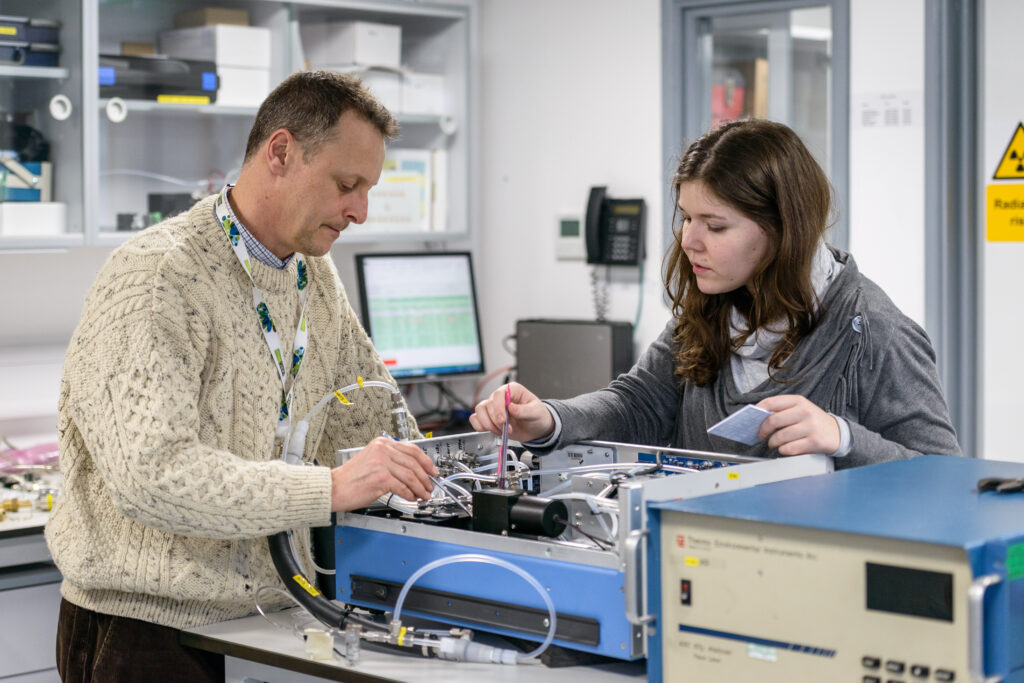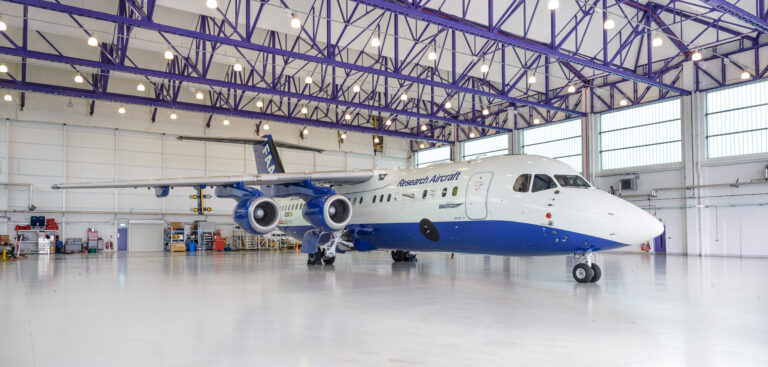Researchers have embarked on a flight campaign over the Labrador Sea – an arm of the North Atlantic Ocean between the Labrador Peninsula and Greenland – to study how clouds form and develop in cold air.
The four-week campaign will deploy the Facility for Airborne Atmospheric Measurements (FAAM) Airborne Laboratory’s British Aerospace 146 aircraft (BAE 146) to look specifically at mixed-phase clouds (mixture of ice and water particles). The FAAM Airborne Laboratory is a world-class research facility managed by the UK’s National Centre for Atmospheric Science (NCAS) and funded by the Natural Environment Research Council (NERC).
The team will combine measurements of cloud properties, weather and airborne particles using a unique set of instrumentation fitted to the aircraft, to help unpick the nuances of how mixed-phase clouds will respond to climate change.
It is currently unclear how mixed-phase clouds will respond to climate changes such as rising sea surface temperatures and atmospheric aerosols. If the ratio of water and ice particles in these clouds changes, there could be a knock-on effect on the climate, although it is uncertain whether this would warm or cool the atmosphere.
Warmer temperatures may lead to more water in mixed-phase clouds, meaning they will reflect more solar radiation, causing a cooling effect. However, the picture is complicated by the role of aerosols. Warmer temperatures, hand in hand with deforestation, fossil fuel burning and industrial activity, may cause a rise in a special type of aerosol particles, known as ice nucleating particles. These particles trigger ice formation by providing a platform for ice crystals to grow on – and that may cause Earth to warm faster by reducing the reflectivity of clouds.
The collaborative research effort, known as M-Phase, will bring together scientists at the Universities of Leeds, Manchester and British Columbia, and is part of a larger ambition to reduce uncertainty in climate predictions due to clouds.
Researchers will take flight from Goose Bay on Canada’s east coast, attempting to pinpoint cold air outbreaks over the Labrador Sea, a frequent source of mixed-phase clouds.
Professor Benjamin Murray, lead researcher from the University of Leeds in the UK, said, “The Labrador Sea is a unique place for cloud formation. Clouds over the Labrador Sea form with air that has traveled across the archipelago in northern Canada – a source of dust.
“We think the dust may lead to ice production in these clouds, but there are very few measurements of dust or clouds over the Labrador Sea, so we’re excited to see what is really happening in the atmosphere.”
The research team onboard the FAAM Airborne Laboratory will fly two mission types. The first will involve profiling low-level stratus and small cumulus clouds; the second aims to profile upstream stratus clouds near Baffin Island.
According to Murray, the aircraft is one of the best for looking at interactions between aerosols and clouds anywhere in the world. “The FAAM Airborne Laboratory is wonderful,” he said. “The team are experts in what they do, and come hand in hand with a set of scientific instrumentation that can study both aerosols and clouds.”




